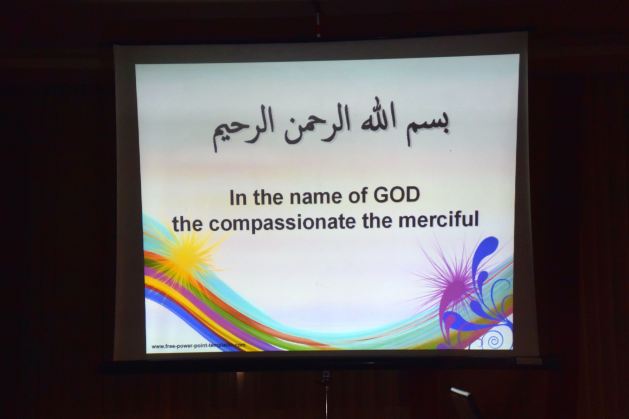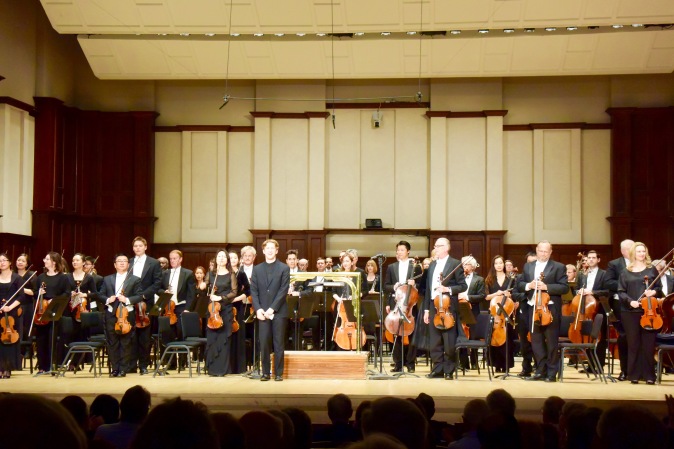
The official group photo. I’m standing in the back row to the right.
For the third year in a row, Susan and I attended the conference Middle Eastern Nurses Uniting in Human Caring. This year’s title was Human Caring in a Time of World Crisis, a theme chosen almost a year ago, before the most recent war between Israel and Gaza, before the hideous executions by ISIS, most recently of a Jordanian pilot burned alive. Some Americans were afraid to attend the conference this year in Jordan (or indeed anywhere in the Middle East). Perhaps some Israelis were reticent to attend as well. But the conference was the largest yet, with approximately fifty attendees, half of them from Arab countries, (mostly Palestinian) nurses, one quarter Israeli nurses, and assorted foreigners including Americans and attendees from Dubai, Bahrain, the Philippines, and Iran.

Iranian nurse on the left; Palestinian nurse on the right

With the second Iranian nurse
It must be noted that it is risky for nurses from the Occupied Palestinian Territories (OPT) and those from Israel to collaborate because of the risk of political repercussions. So far these conferences have not been widely publicized in terms of their professional colleagues being aware of their attending the conference. Publicity about the conference could lead to some people being condemned by their colleagues and perhaps even losing their jobs. Indeed, some Palestinian nurses from Bethlehem and other areas were unable to attend precisely because of these professional hazards.
And yet, it is precisely such cross-national gatherings, bridges between the people as occurred with this one, that are critically needed in the region. Jordan has been the mutually agreed-upon meeting place because Jordan is the one country to which Palestinians are able to travel freely. Jordan is also at peace with Israel, so Israelis travel to Jordan to visit tourist sites, such as Petra, or in this case for this professional development conference.
It was necessary to state among attendees that the conference was not a political event. Rather, it was a gathering to promote professional development within the various nursing disciplines. The conference was planned by a committee comprised of Israeli and Palestinian nurses. In other words, those nurses most deeply involved with each other and concerned about promoting closer ties between Israelis and Palestinians are the ones who organized the conference.

Dr. Jean Watson in mid-sentence
The unifying international force is the work of nursing pioneer Dr. Jean Watson. I call her the Florence Nightingale of the 21st century. Her vision is to acknowledge that all nurses share common values as healers. Therefore, nurses of every nationality are ready to work together toward their common healing goals, regardless of political and national conflicts. For example, the Israeli nurses proudly spoke about the fact that they gave equal care to wounded Israeli soldiers or captured Palestinian enemy soldiers. Everyone receives the same high quality compassionate care, a stated mission and policy of Hadassah Medical Center.
Jean Watson developed the nursing theory of Human Caring, outlined in her Caristas Processes (Caritas is the Latin word for caring). She is internationally recognized and has hospitals in countries around the world that seek to implement her philosophy of caring among their nurses. She invited Susan and me to participate from the beginning of these conferences, seeing our environmental design work using music and nature as being totally in alignment with Caritas.
At the first gathering of the conference, all attendees introduced themselves, what they did, and where they were from. It was a confrontation with reality to hear so many nurses proudly state their work places in “Palestine,” a country that exists for them, where they have lived their whole lives, but is not recognized by the international community. At this time, there is a news-blackout in the US press regarding life in the Palestinian Territories.
The first presentation was from the Palestinian head of their nurses’ association. In spite of our intention to avoid politics, this Palestinian man spoke to the “elephant in the room,” the fact that Palestinians live in a territory controlled and occupied by Israel. He spoke of his belief in the “two-state solution,” i.e. Israel and an independent Palestine. He spoke of the absolute necessity of cooperation and collaboration between the Israeli and Palestinian medical communities who confront the same issues: limited resources, the spread of antibiotic-resistant bacteria, the necessity of vaccinations, communicable and non-communicable diseases, poor health as a result of poverty, the necessity of treating refugees from the nearby Syrian civil war, etc.

Susan with the head of the Palestinian Nurses Association
An example of the political challenges creating health challenges is in the fact that there are six hundred Israeli checkpoints within the Palestinian territories. While Palestinians must pass through them every day to get from one place to another, for a women in labor or a cardiac patient in an emergency who needs care in Israel, the check points pose a dramatic risk. For Palestinian nurses that work in Jerusalem, their journey can take a couple of hours each way even though the distances are small. Ambulances that bring acute patients from Palestine into Israel are forced to exit the ambulances, be inspected, and then get into an Israeli ambulance, regardless of the condition of the patients. Women have been forced to give birth at the checkpoints because the Israeli guards would not expedite their passage through the checkpoints. These upsetting stories were told in a matter-of-fact way. It’s just a daily fact of life. Their Israeli nursing colleagues are equally dissatisfied with the decades-long impasse.
Nurses from the Palestinian Territories stated that they have not received pay for 7 months; the Hadassah facility in East Jerusalem went 4 months without pay and then the nurses themselves figured out how to generate revenue for the hospital by treating refugees from the UN-administered camps near the Syrian border. In spite of not being paid, the nurses continued to come to work every day to take care of their patients.
We heard that during the recent war with Gaza, air-raid sirens would sound in Jerusalem, at which point people were supposed to move into the bomb shelters. But the Israeli and Palestinian nurses in Hadassah Medical Center refused to abandon their patients and didn’t retreat into the bomb shelters. Their level of professional dedication is inspiring.
The bulk of the two-day conference was spent in 20-minute TED-style presentations of research projects conducted in Israel, Palestine, and elsewhere. Subjects included: confirming the effectiveness of mid-wives, application of genetic testing to discourage marriage among cousins in Palestine even though it is condoned in the Koran, promotion of palliative care, promotion of employment opportunities for disabled/challenged individuals. In short, medical workers everywhere confront similar issues and have done so ever since Florence Nightingale elevated the role of nurses as a profession.

Susan presented a talk entitled Space, Place, and Grace
Interestingly, one of the visiting Iranian nurses compared Caritas with Islamic philosophy, pointing out similarities in the injunctions for selflessly providing care wherever and to whomever it’s needed. After all, the Moslem world, particularly under the Ottoman Empire, was the world’s leader in medicine, mathematics, and science, at peace for centuries during the time that Europe was embroiled in its Catholic-Protestant religious wars. The presence of so many Moslem nurses, some of whom always wore head scarves (abayas), presented Islam as compassionate and caring. The sense of shared values among all nationalities of nurses was reinforced by the conference.

Invoking Islam as the foundation of delivering compassionate nursing care
As individuals, we feel so powerless to effect any change the course of human events on a national or international level. Yet, there is a famous saying to the effect that a group of committed individuals is the only thing that has ever been capable of changing history. Thus, we will continue to attend and support future conferences of Middle Eastern Nurses Uniting in Human Caring. It embodies the sentiment of the saying: Let there be peace on earth, and let it begin with me.

Having fun at the end of the conference. Jean Watson is in the back.




























